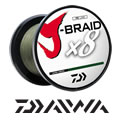Making the drag smoother
-
replica66[]
- Angler

- Posts: 42
- Joined: Mon Nov 28, 2016 9:06 am
Making the drag smoother
I have a Daiwa Crossfire 1000-3iB spinning reel that my grandson gave me. It's a few years old, but he didn't use it much, maybe three or four times. I like this little reel except the drag is not smooth. It seems to bind and grab some when a nice fish pulls drag when it should go out smoothly. Using 2 lb test mono, and fishing for large Bluegill and Redear Sunfish, a nice smooth drag system is a must, especially when a big Redear realizes it's hooked. Is there a way to make the drag more even and smooth?
- IlliniDawg01
- Pro Angler

- Posts: 2349
- Joined: Sun Mar 17, 2013 8:20 am
- Location: Glen Carbon, Illinois
IlliniDawg01
Looking at the schematic: http://www.daiwa.com/us/service/manuals ... 00-3IB.pdf
I would recommend buying a simple smoothdrag washer from Tackle trap and try lightly greasing it and either placing it between parts 3 and 4 or replacing part 4 depending on stack thickness. You might need to trim the smoothdrag washer a bit to fit nicely.
DaveJ
I would recommend buying a simple smoothdrag washer from Tackle trap and try lightly greasing it and either placing it between parts 3 and 4 or replacing part 4 depending on stack thickness. You might need to trim the smoothdrag washer a bit to fit nicely.
DaveJ
Re: Making the drag smoother
This is a bit involved and may or may not be worth your time. You'll have to decide, but the results are worth it. Upgraded drag washers are only half of the solution, the metal washer(s) are just as critical to a smooth drag. So here's what you can do if you want ...
What you'll need -
A flat sharpening stone OR some 120 grit sandpaper and a tile section or sturdy flat piece of metal. We're looking for flatness here, this is critical. Secure the sandpaper to the tile or metal with tape. It must be flat and can't move.
What to do -
Remove the drag washer stack from the spool. Separate the metal and fiber washers, put the fiber ones aside. Wipe the metal ones down to remove any oil or grease. Take a permanent marker and completely color both sides of the washers. Now place the washer on the abrasive surface. Using moderate downward finger pressure, move the washer in a circular or figure 8 pattern for a bit. Now pick up the washer and inspect it - where the ink remains are the low spots, where it's been removed are the high spots. Metal washers are machine stamped from large sheets of metal. They may appear flat to the eye, but the ink test proves otherwise. The object is to remove the high spots, which you'l know you've done when the ink is completely removed. This is known as "lapping" Do this to every metal washer on both sides until all traces of ink are removed. No need to go any further, and the amount of metal removed is negligible.
At this point you can finish with 160 - 180 sandpaper or a finer stone. I go one step further by using a dremel tool with a felt wheel and some metal polish to finish the process, that's up to you. Whatever you do, be sure the washers are completely clean and dry before reassembly. Now reassemble the drag. If you do use grease, use the tiniest amount you can that will barely show a fingerprint, any more will work against you.
Yes, it's tedious and time consuming. But with the washers as close to perfectly flat as possible, there is much more uniform contact within the drag stack AT LOW DRAG SETTINGS where it counts the most, especially with light line. This pretty much eliminates drag stuttering at startup, where most drag mishaps occur.
What you'll need -
A flat sharpening stone OR some 120 grit sandpaper and a tile section or sturdy flat piece of metal. We're looking for flatness here, this is critical. Secure the sandpaper to the tile or metal with tape. It must be flat and can't move.
What to do -
Remove the drag washer stack from the spool. Separate the metal and fiber washers, put the fiber ones aside. Wipe the metal ones down to remove any oil or grease. Take a permanent marker and completely color both sides of the washers. Now place the washer on the abrasive surface. Using moderate downward finger pressure, move the washer in a circular or figure 8 pattern for a bit. Now pick up the washer and inspect it - where the ink remains are the low spots, where it's been removed are the high spots. Metal washers are machine stamped from large sheets of metal. They may appear flat to the eye, but the ink test proves otherwise. The object is to remove the high spots, which you'l know you've done when the ink is completely removed. This is known as "lapping" Do this to every metal washer on both sides until all traces of ink are removed. No need to go any further, and the amount of metal removed is negligible.
At this point you can finish with 160 - 180 sandpaper or a finer stone. I go one step further by using a dremel tool with a felt wheel and some metal polish to finish the process, that's up to you. Whatever you do, be sure the washers are completely clean and dry before reassembly. Now reassemble the drag. If you do use grease, use the tiniest amount you can that will barely show a fingerprint, any more will work against you.
Yes, it's tedious and time consuming. But with the washers as close to perfectly flat as possible, there is much more uniform contact within the drag stack AT LOW DRAG SETTINGS where it counts the most, especially with light line. This pretty much eliminates drag stuttering at startup, where most drag mishaps occur.
- angry john
- Platinum Angler

- Posts: 1108
- Joined: Mon Jan 16, 2012 7:16 pm
- Location: Millington TN.
Re: Making the drag smoother
I use a piece of glass because it is as flat as i can find easily.
Re: Making the drag smoother
Great info. Thanks!uljersey wrote:This is a bit involved and may or may not be worth your time. You'll have to decide, but the results are worth it. Upgraded drag washers are only half of the solution, the metal washer(s) are just as critical to a smooth drag. So here's what you can do if you want ...
What you'll need -
A flat sharpening stone OR some 120 grit sandpaper and a tile section or sturdy flat piece of metal. We're looking for flatness here, this is critical. Secure the sandpaper to the tile or metal with tape. It must be flat and can't move.
What to do -
Remove the drag washer stack from the spool. Separate the metal and fiber washers, put the fiber ones aside. Wipe the metal ones down to remove any oil or grease. Take a permanent marker and completely color both sides of the washers. Now place the washer on the abrasive surface. Using moderate downward finger pressure, move the washer in a circular or figure 8 pattern for a bit. Now pick up the washer and inspect it - where the ink remains are the low spots, where it's been removed are the high spots. Metal washers are machine stamped from large sheets of metal. They may appear flat to the eye, but the ink test proves otherwise. The object is to remove the high spots, which you'l know you've done when the ink is completely removed. This is known as "lapping" Do this to every metal washer on both sides until all traces of ink are removed. No need to go any further, and the amount of metal removed is negligible.
At this point you can finish with 160 - 180 sandpaper or a finer stone. I go one step further by using a dremel tool with a felt wheel and some metal polish to finish the process, that's up to you. Whatever you do, be sure the washers are completely clean and dry before reassembly. Now reassemble the drag. If you do use grease, use the tiniest amount you can that will barely show a fingerprint, any more will work against you.
Yes, it's tedious and time consuming. But with the washers as close to perfectly flat as possible, there is much more uniform contact within the drag stack AT LOW DRAG SETTINGS where it counts the most, especially with light line. This pretty much eliminates drag stuttering at startup, where most drag mishaps occur.








